I had the opportunity to fly to Houston and present at the Texas Music Teachers Association Convention. I have always wanted to check it out and I was looking forward to my time there. My only regret was not spending more time. It was a super quick turn around trip. I had less than 48 hours from the time I flew in to the time I flew out to take it all in.
Upon arriving I was overwhelmed by the size of the hotel when I walked inside. It was huge! It didn’t take me long to figure out that we were at this hotel for a reason. It HAD to be big for all that TMTA does at their convention. (They say everything is bigger in Texas, right?)

Hyatt Regency Houston Lobby
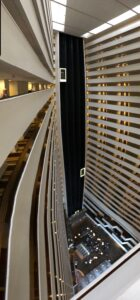
Panaramic view outside my room door.
One thing that TMTA does differently and I have never seen before is how much their convention is student focused. There was probably more student based events than teacher! It was absolutely amazing to see all the students and entire families coming to particpate and support the organization.
There were Ensemble programs, Digital Keyboard Orchestra sessions, Concerto Finals, Piano Solo Finals, All Star Festival, Winners recitals, Composition finals and recitals, Chamber music, masterclasses and I’m sure I’m missing something! There were even presenter session topics specifically for parents to attend!
And on top of that you had showcases, teacher presentations, concerts and more! It was quite the convention and I can only imagine how much behind the scenes work that goes on to make it all happen. So kudos to each and everyone!
I am splitting my TMTA posts into two parts. Today I will be sharing my notes from the teacher presentations I was able to attend. Stay tuned for part 2 where I will share the rest of my TMTA experience!
Parent Trap: Unlocking the Potential of The Parent-Teacher Partnership
By Dorothy Yan
When you walk into a conversation, don’t place assumptions. We think we remember what they said to us, but in reality, we remember what we think what they said to us. We remember how we felt…
The process, not the product is how we get there. The key is trust. June Glacier
Trust is in the front of the brain. Back is distrust. You can do both at the same time. Create a space of trust that can be formed and flourished.
Recommended Reading- Conversational Intelligence
Unity- everyone has the same goal
Harmony- everyone needs to know their job to move forward in the same goal.
Words contain words. We assume meaning is in the speaker but its’ actually in the listener.” Judith Glaser
Choose to teach to the potential. Find what they did right. Use deficit as opportunities to learn and grow.
The parent is the expert on their child. The child is the expert of what’s going on in their mind. The teacher is the expert in the studio. Everyone is an expert.
3 ways to develop trust…
1- Active Listening-
“People won’t care how much you know until they know how much you care.” Theodore Roosevelt
- Level 1- Internal Listening- Listening to thoughts in my own head. Planning response.
- Level 2: Focused Listening– listening to understand.
- Level 3: Global Listening- listening to learn.
Listening practicals-
- Don’t multitask- When you break eye contact you lose trust.
- Don’t interrupt
- Use understandable terminology
- Listening for goals, expectations, assumptions
2- Powerful Questions
- Closed questions vs. open ended questions
- Open ended (creates conversation)… How would you like to pay for this months tuition?
- Closed- Did you pay this months tuition?
Assume the best when giving questions.
- Don’t ask questions you already know the answer to.
- Ask one question at a time.
- No lengthy intro or explanation
- No “why” questions- immediately puts on the defensive
- Start questions with “what” and “how”
Examples…
- What would be the most helpful for you?
- How do you feel about that?
- Can you help me understand?
- Could you tell me more?
Case study of student quitting due to extracurricular activities. Student enjoys piano…
Some questions can ask…
- How can I make lessons more accommodating?
- How can we work together so he can manage his time and do both?
- Can you share with me what’s going on or how you came to this conclusion?
Follow your curiosity… and communicate it.
3- Direct Communication
Speak to people the way you want them to become.
There are 3 brick layers. You ask each one… what are you doing?
- First one says, I’m building bricks
- Second one says, I’m building a wall
- Third one says, I’m building a cathedral
Speak as if they are going to be a cathedral.
- Clear, concise messages followed by… silence.- don’t talk to much.
- Appropriate language and tone
- States objectives- what are your goals for your child in piano?
- Bringing new perspective
- Shared meaning- repeat what they say but in your own words so you make sure you understand it and on the same page.
- Action steps- every communication should end with an action step. What would you like to do after this? Etc…
Example…
I hear that you want your child to succeed. He’s not ready yet… but here are some steps to help him get there…
The Complete Package: Using Musicianship Skills to Enhance the Teaching of Repertoire
By Libby Vanatta
Functional skills- Fluid, understanding, comfort level
Essential skills, ability to…
- Internalize basic rhythms and pulse (rhythm reading)
- Read music (note reading)
- Perform with physical ease and technical efficiency (Technique)
- Hear notes on page (Audiation)
- Work creatively (musicianship skills)
- Understand basic elements of theory, form, harmony (theory)
- Respond to interpretive elements of a composition to express emotional character (“Musicality”)
- Conceptualize and transfer musical ideas ( Application of concepts)
- Independently and problem solve (Independent learner)
- Perform comfortably individually and with others in variety of settings (develop memorization skills and manage perform anxiety)
Lesson elements-
Core-
- Repertoire, theory, technique
- Goal fluent note and rhythm reading
Musicianship-
- Harmonization
- Transposition
- Composition
- Improvisation
- Sight-reading
- Ear training
Perimeter skills-
- Music history
- Ensemble
- Accompanying
- Music literacy
Harmonization– playing chords underneath given melody
3 types- choose own chords, Roman numerals, lead sheets
- Improves understanding of harmony
- Training ears especially when transposed
- Aid in memorization
- Teach chord progressions with scales
- Apply those in harmonization examples
- Always transpose examples!
How to apply to rep example
ie. Tarantella (Prokofiev)
- Analyze chords
- You could have students change the chord harmonies or change the style
- Understanding chord progression
- Solidifying melody
Transposition
Emphasize what is same what is different
- Develop intervallic reading
- Improve sight-reading by patterns
- Improve recognition pitch/harmony function
- Aid in memorization
- Transpose music 1-2 levels below
- Transpose smaller sections of current piece
- Find pieces similar style that they are learning, but easier
Sight-Reading
Spend less time learning piece. Play quickly without frustration. Lifelong learner.
- Look 1st
- Audiate
- No stopping- rhythm accuracy
- Brain/eyes ahead of fingers,
- Eyes on music
- Ready intervallic-ally
- See patterns
- See chord units
- Always hands together
Ask students a series of questions about what they see.
- Try the piece
- Talk about what went wrong
- Try it again then stop (otherwise its practice)
Composition– setting parameters until they find something they love
- Creative outlet
- Links self-expression
- Reinforce musical concepts
Formal theory guidelines-Use I-V-I progression or pentascale, etc…
General guidelines-No restrictions, tonality, story-telling…
General tips-
- Notation should be flexible
- Supply guidance through suggestive ?’s
- Be specific in assignment to provide parameters
- Use musical form to create comfort through structure
- Encourage starting the process at the piano using improvisation
- Do Sound recordings
Applying composition to a piece…
- Analyze what is going on in a piece and be inspired by the
- Sound
- Form
- Elements of the piece- triads, scales, leaps, Alberti bass
- Story element
Improvisation-
- Creative outlet
- Links music making to self expression
- Better understanding of concepts
- Improved rhythm skills
- Creates confidence
Start with creating a melody over teacher accompaniment
Gives teacher information- Do they have rhythmic awareness? Do they include patterns? Etc.
- Creating new melodies over existing bass line
- Create new bass lines under an exiting melody
- Add an intro or coda
- Mimic a piece to create a homage
- Change styles
- Change mode of key/transpose
- Change ornaments, articulations, etc….
- Change title and bass something off the new title
Ear training- audiating off score
- Sight-sing with Solfege
- Model teach of elements
- Listen to recordings
- Feel meter
- Dictation
- Play a measure of a piece
Composition= Farming; Arranging= Sherlock Holmes
By John S. Hold
A lot of experimentation. Experiment a lot. The more we do, the better we get…
Fingerpainting-
Liken composing and arranging to fingerpainting. What do we do when we fingerpaint? We mess around! We explore… eventually we create something.
To help a student loosen up… Get started with question and answer playing- be careful not to do much as it can box them in.
Don’t worry about writing anything, that can come later.
Black key improvisation-
Take the lead, take it back, etc… gains confidence
A weed is nothing more than a plant that no one else wants. There is no such things as mistakes.
Can give a rhythm to bass composition notes on.
Exchange with a partner and have them change two notes. Hand back. Are you happy with what they did to your creation?
Can add triads, stick to only chord tones per measure and they can’t go wrong.
Human composition- have students line up…
- Create a scale
- Name them tonic, subdominant, dominant, tonic
- Add in median and sub-median
- Add in supertonic and leading tone- can save for end for a strong finish
Have them do a vocal improvisation.
Arranging- (see handout for different ideas for arranging)
- Major minor
- Style changes
- Find fragments (3-4 notes) and change them up or add to it.
- Scales- use 5 finger patterns for a run accompaniment.
- Look up Harlem stripe piano- 3-4 chords that keeps going.
- 12 bar blues- 3 chords
- and more!
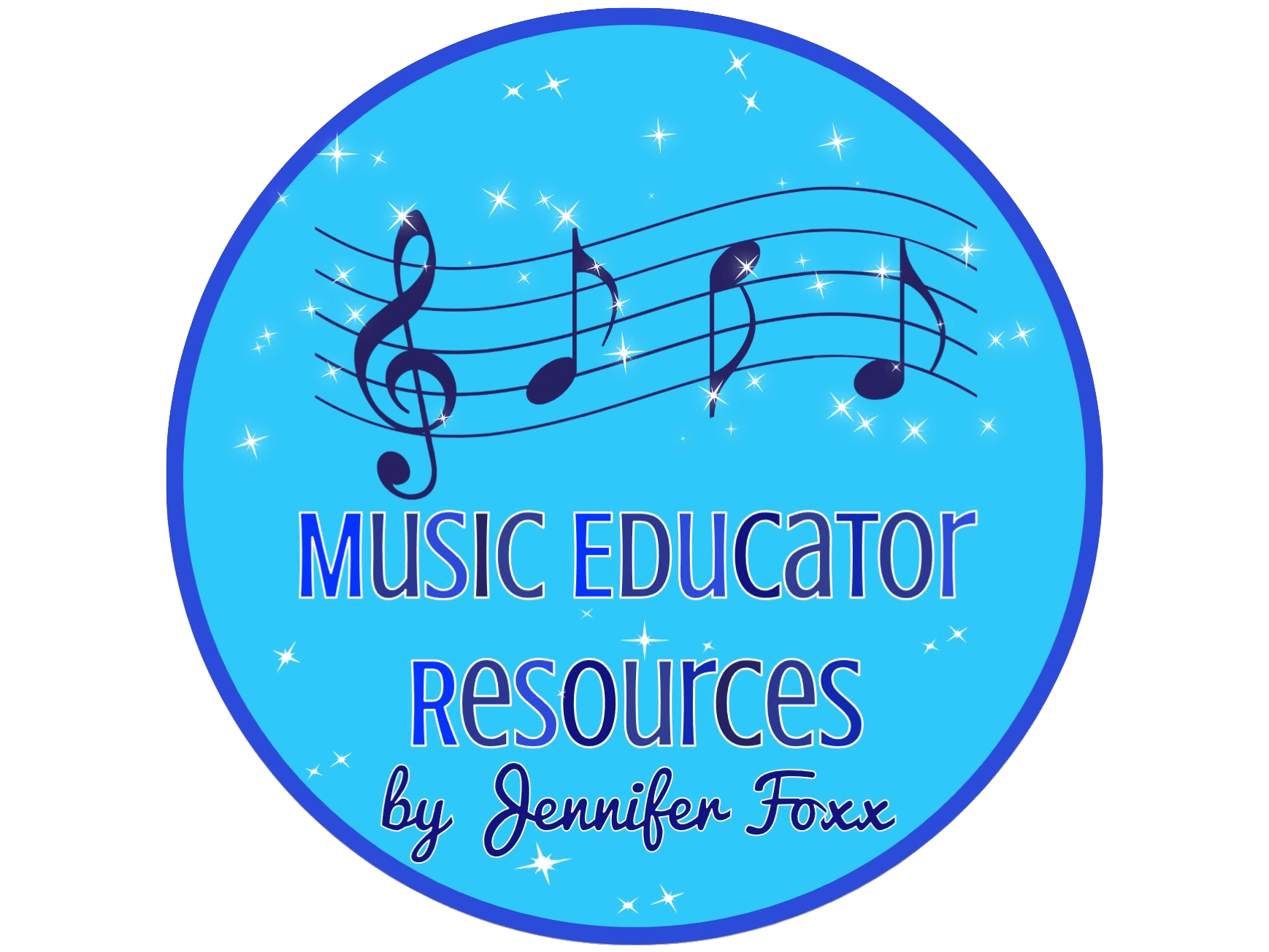
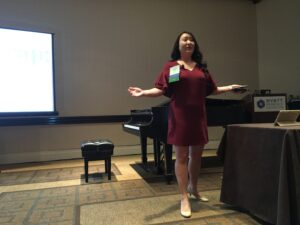
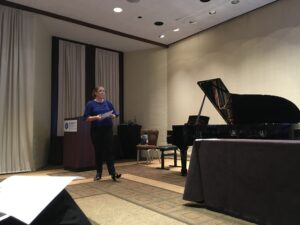
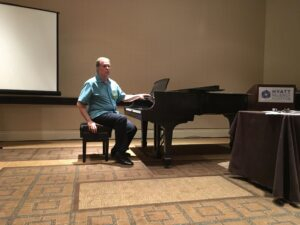

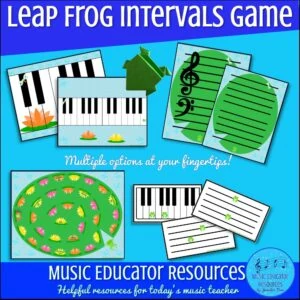
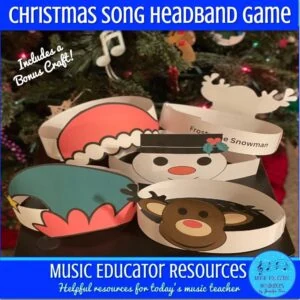
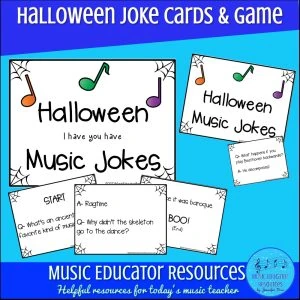
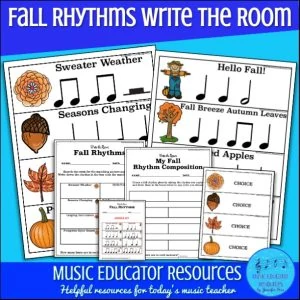
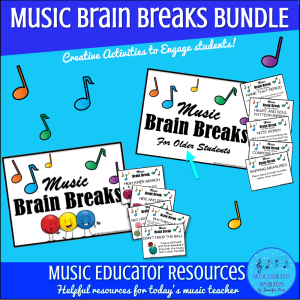
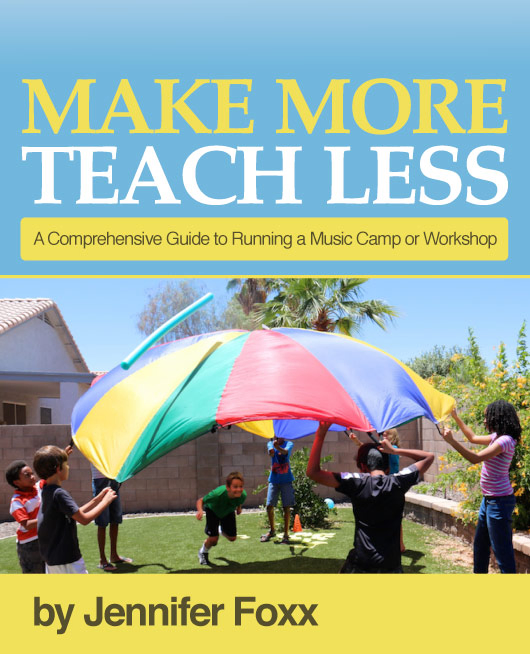
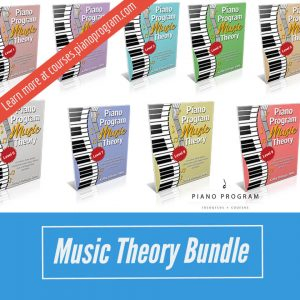
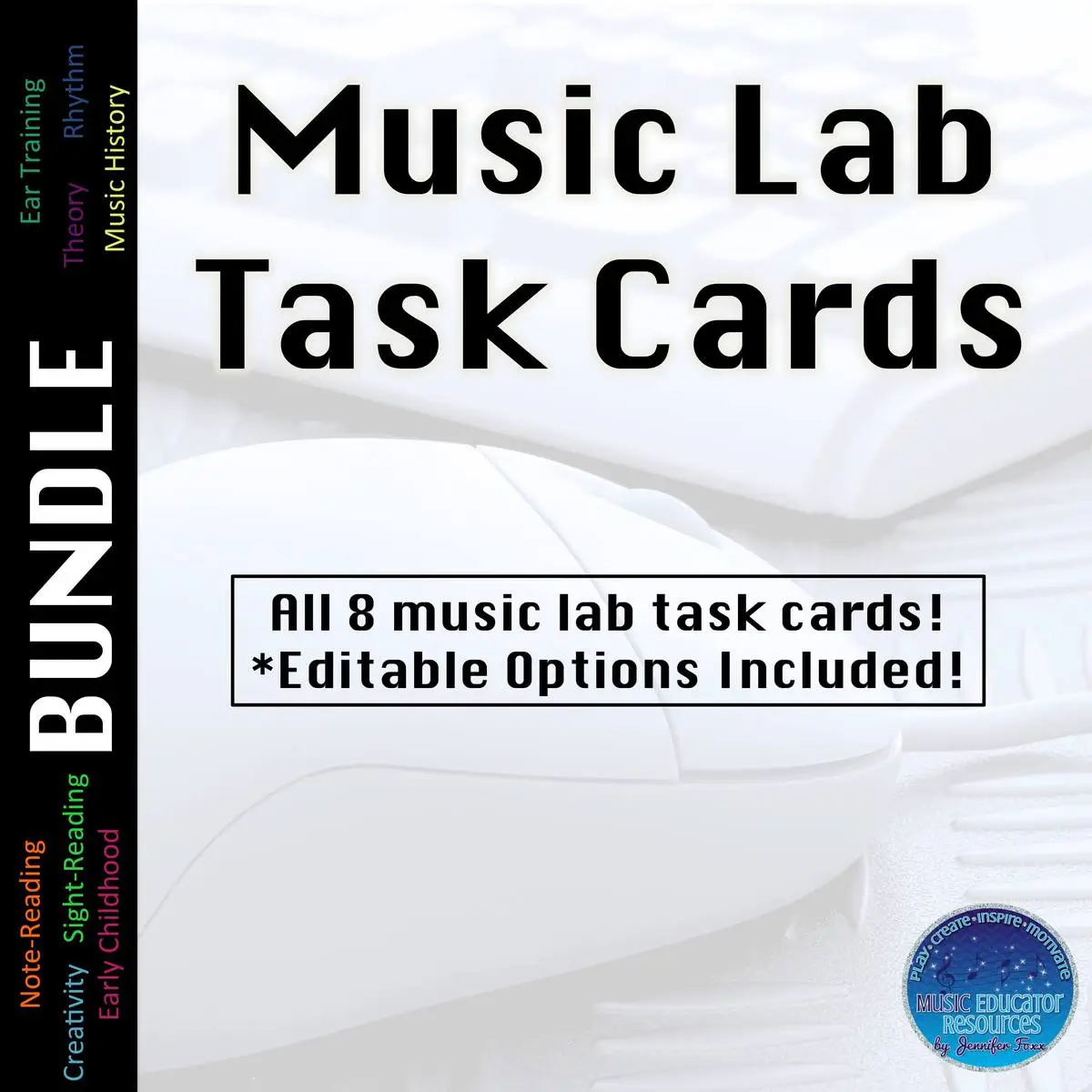
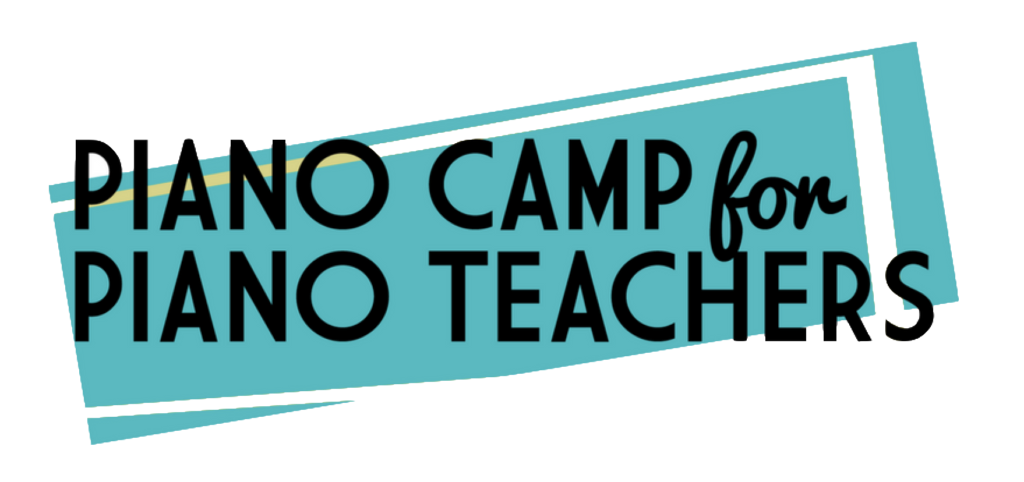
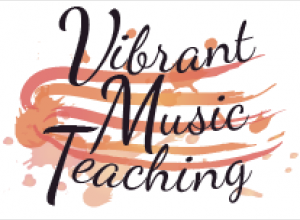

0 Comments
Trackbacks/Pingbacks